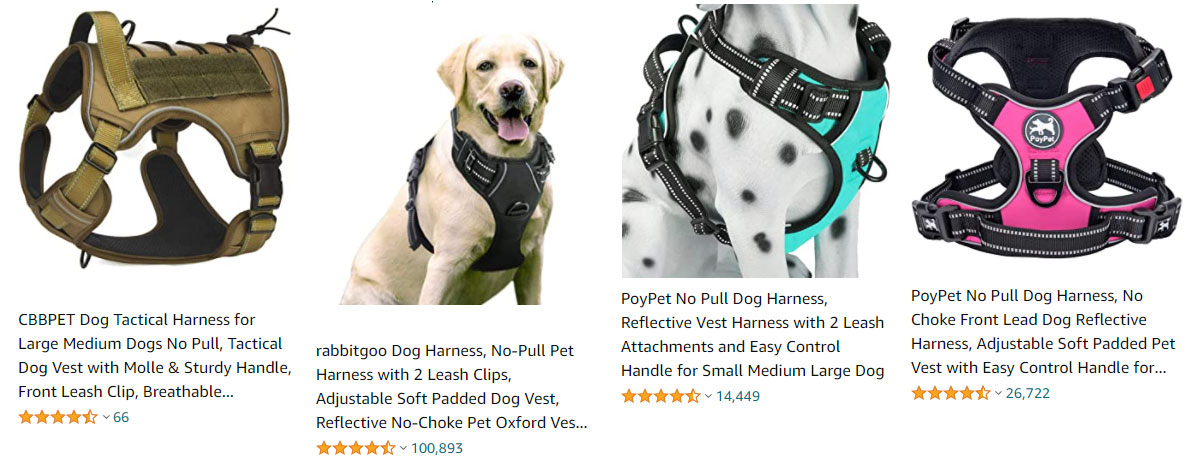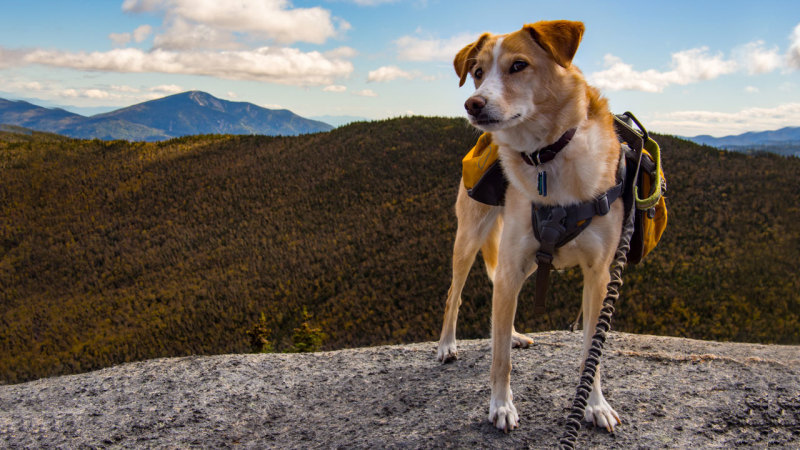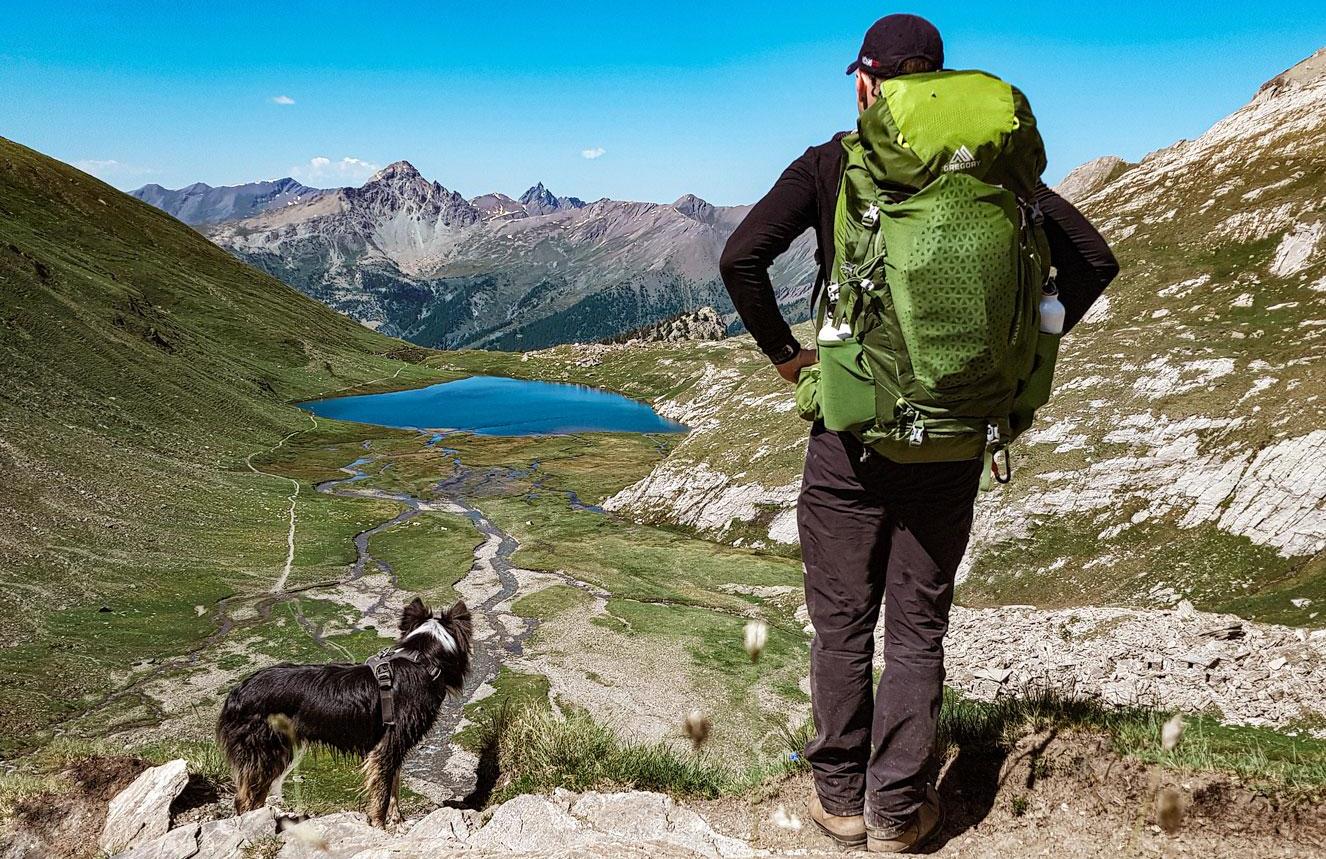Hiking with your dog
You and your dog are no longer satisfied with simple daily walks and basic dog activities? You want to see more and go further? Then practice the cani-rando with your dog!
Beyond walking with your dog, hiking with your canine is a real activity that I propose you to discover today. What does it consist of, for which binomial master/dog, where to practice hiking, the precautions to take but also the dangers to avoid: I tell you everything!
Cani-hiking
It's not just a walk, it's a real hike when the walking distance exceeds 10 km and lasts several hours, or even several days if you decide to go on an adventure with your bag on your back and your dog by your side.
It is an ideal activity to offer to your dog on the weekend or during the vacations! Real distance goals can be set and above all wonderful places can be discovered.
You have several possibilities to practice cani-rando. The term "cani-rando" implies traction but it is not the only option:
• You can indeed be pulled by your dog with a harness for your dog and a belt adapted for you
• You can also practice hiking while leaving your dog in total freedom if he is obedient enough
• If you are afraid of losing your dog or not being able to control him, you can keep him on a leash, but in this case, you might as well opt for a traction with adapted equipment
• You can also make your dog participate in the carrying of your belongings if you go for several days, in which case he will need a specific harness with compartments, called a pack bag. Be careful, a dog should not carry more than 10% of its weight!

For which dogs ?
For your dog to be able to follow you during your hikes, he must of course be in good physical and mental health. Moreover, small dogs but also big ones will not be the ideal candidates: small dogs could have difficulties to cross possible obstacles and big dogs could suffer from articulation problems on long distances.
Then, of course, dogs with crushed noses/small snouts (e.g. Bulldogs, Boxers, etc.) will suffer from "ventilation" problems and will have difficulty breathing during exercise. This is not a general rule, but it should be taken into account if your dog is one of these breeds. But don't panic, if you have a Great Dane or a Chihuahua, you can still go hiking but you will have to adapt your routes and the terrain on which you will walk. You just have to choose your route, the environment and the distance you walk according to your pet's abilities.
Of course, your dog must also enjoy hiking! If your dog is rather slippery and in a hurry to get home when you walk him, don't expect to cross the Pyrenees with him. Moreover, it is rather recommended and important that your dog is obedient and sociable to practice hiking because it is not a question of losing your dog in a vast and unsecured place or that he has to wear a muzzle all along the hike "in case" you meet other dogs or humans.
A muzzle will be appropriate for short distances, but not for a long multi-day hike. Finally, you must know your dog and especially its character to be able to take it with you on a hike. Indeed, if your dog has very developed hunting instincts for example, you will have to be extra vigilant, especially so that he does not run away and that you do not lose control of your dog.
Where to hike?
As mentioned before, it will be important to choose the right hiking itinerary, depending on your dog's abilities. I recommend you to choose itineraries where you will be able to offer refreshing breaks to your dog (rivers, lakes, ponds, etc.) if he likes water, of course.
In addition, you should know that it is forbidden by law to practice cani-rando in certain national or regional parks or in nature reserves, even if your dog is tied up. If you are going on a multi-day trip, you will also have to plan and anticipate the sleeping places and check that the places you choose accept the presence of dogs. It would be rather regrettable to have to turn back or sleep in a place that is not secure and therefore not very suitable.

Precautions
In addition to all of the above advice, you will need a few essentials to go hiking:
- Water and bowls that are easy to carry
- A tag to attach to your dog's collar or harness with your contact information
- Your dog's health booklet
- All traction equipment (belt, harness, leash)
- First aid kit in case of injury
- Appropriate footwear in case of pasta injury
- A specific harness (pack bag) if you wish to have your dog carry equipment
- If your hikes are long, plan a food supplement to give to your dog or adapted energy bars for example while waiting for the evening meal
In addition, once you have set a date for your hike, don't hesitate to visit your veterinarian so that he or she can certify your dog's physical health and ability to travel several kilometers.
Another recommendation, if you want your dog to help you carry the equipment with a pack, don't ask him to pull you either! It's either you or the equipment, not both!
In summary
To go hiking with your dog safely, you must :
Check your dog's physical condition and abilities (with a veterinarian)
Plan an itinerary adapted to your dog's physical abilities
Take all the necessary supplies in case of injury
Take regular breaks to hydrate and check your dog's physical condition
Don't let your dog wander and go see all the hikers or other animals you meet along the way
Do not untie your dog if he is a hunter and runaway and you have not mastered the recall
Do not let your dog go where you can't see it (risk of falling, cliffs, uneven ground, etc.)
Remember to hang a tag on your dog with your contact information in case he runs away/loses
Never let your dog carry equipment AND pull you: it's one or the other


